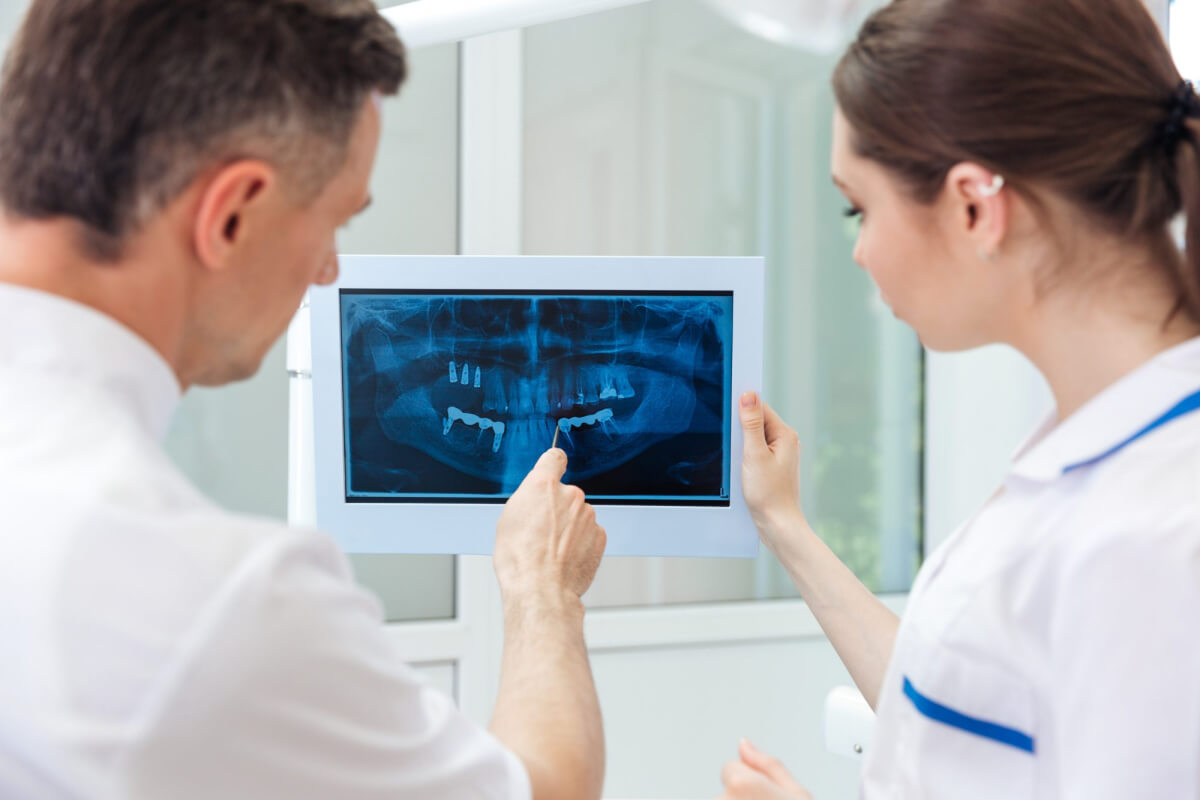Dentists use X-rays to obtain images of your jaw, gums, and even inside your teeth. Those images are essential to evaluating your oral health and helping to resolve any symptoms you may be experiencing. X-rays equip dentists with the information needed to fix cavities, remedy tooth decay, and prevent harm caused by impacted teeth.
What kinds of X-rays are there?
Not all X-rays are alike. Each type has very specific purposes and objectives. There are four types of X-rays that are taken from inside your mouth.
- Bitewing X-rays involve you biting onto a special piece of paper so your dentist can see how well your crowns match and look for cavities.
- Occlusal X-rays are taken with your jaw closed to see how your upper and lower jaws are aligned. Occlusal X-rays get a picture of all your teeth in one single image.
- Panoramic X-rays are taken as the X-ray machine rotates around your head. Panoramic X-rays in Edina are often checking wisdom teeth, investigate jaw issues, or are part of the preparation for dental implants.
- Periapical X-rays take a narrower view by focusing on just two teeth but focusing on the entire tooth structure from root to crown.
Are dental X-rays dangerous?
All dental X-rays expose patients to some radiation, but those radiation levels are low and safe. To protect you from any adverse effects of radiation, the staff at your dental office in Edina will drape your pelvic region, chest, and abdomen with a lead shield that’s sometimes called a bib. Because the thyroid gland is particularly vulnerable to radiation, you may also wear a thyroid collar around your neck and throat.
As safe as all dental X-rays are, pregnancy is a game-changer. Exposure to avoidable radiation is not safe for a developing fetus. Any woman who is or believes she may be pregnant should avoid any radiation exposure, including X-rays. If you are a woman who is or may be pregnant, be sure to let your dentist in Edina know.
Digital dental X-rays
Like every aspect of dentistry, there have been incredible advancements in technology that have made treatment faster, more effective, and more comfortable. It’s as true about dental imaging techniques as any other area. Today, dental X-rays in Edina are often digital.
What are the advantages of digital X-rays in Edina?
Digital X-rays use less radiation
Digital X-rays still involve some radiation, so your dentist will still take all appropriate precautions, but there is 90% less radiation in digital X-rays compared to traditional X-ray technology.
Digital X-rays are faster
Traditional X-rays have to be developed. (Remember when that was true about photographs?) Just as digital photography has made picture-making an instant process, digital X-rays need no development but are available instantly.
Digital dental X-rays in Edina are of better quality
Your dentist can blow up and zoom into and out of digital X-rays much more effectively than a traditional X-ray, allowing them to see precisely what information is needed. This may reduce the need for additional X-rays or allow for more precise subsequent imaging.
Digital X-rays can be transferred nearly instantly
One of the goals of modern medical and dental practices is to ensure that records can be transferred easily and efficiently whenever appropriate. Digital X-rays can be transferred to other dental offices, specialists, or clinics as easily and quickly as sending an email.
Digital X-rays at a dental office in Edina are environmentally friendly
Developing traditional X-rays involves the use of development chemicals that can have adverse environmental side effects. With no need to develop digital X-rays, those environmental risks are eliminated.
Your dentist is committed to providing efficient and effective treatment. X-rays are an important part of that process, and digital dental X-rays are an advanced and safe way of ensuring your dentist in Edina has all the information they need to ensure your good oral health. If you ever have any concerns about X-rays or any aspect of your care, be sure to let them know.
Want to learn more about how digital dental X-rays can benefit your oral health? Contact our Edina dental office today to schedule your appointment and get the care you deserve!

